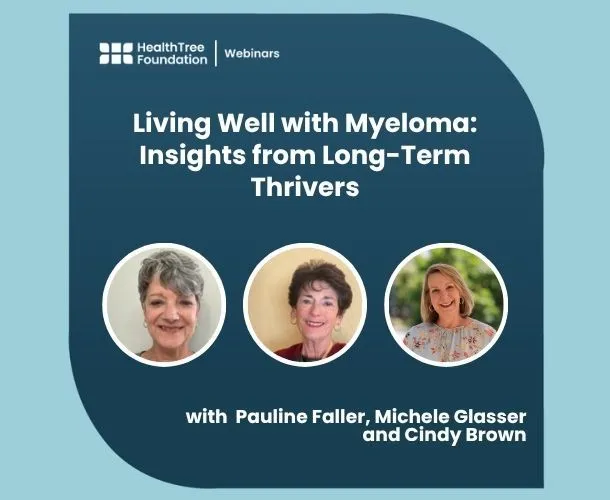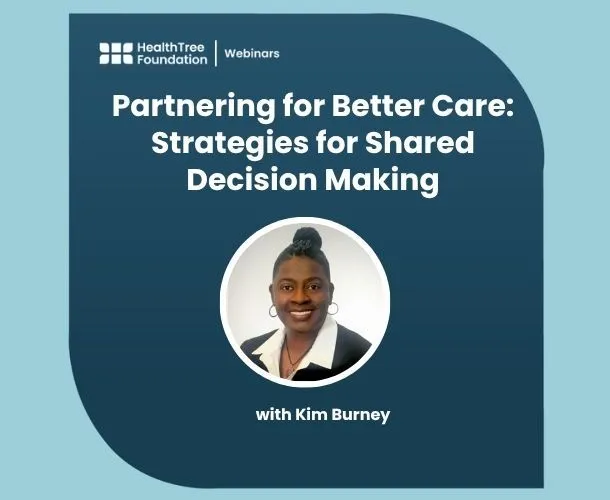Holiday Blessings For Myeloma Patients? Now More Than Ever!

In the twelve years between 2003 and 2011 we had 4 drugs approved for the treatment of multiple myeloma. This was 4% of the total of all oncology drugs approved during that period, and because myeloma is only 1% of all cancers you could think we were blessed to have drug approvals 4 times the number one might expect to be developed. I think this is testament to the coordinated and dedicated efforts of myeloma specialists and researchers, IMF, MMRF, drug companies and myeloma advocates. However, this year we have had 4 drugs approved in just one year and this is 21% of all oncology drugs approved this year to date. I say thank you for this outstanding effort and all who have contributed. A cancer which represents 1% of patients with 21% of drugs approved is MIRACULOUS. However, I have one HUGE caveat, which is myeloma specialists will be the only ones who will be able to provide patients the full potential of these new drugs. The importance of having a myeloma specialist on your team to provide treatment or a plan for your local hematologist/oncologist to administer has always been a must have for myeloma patients. Now, however this bounty of new drugs enhances this need, and can best be explained by use of an example. I recently received an email from a patient who wrote the following:
Hi Gary, Was wondering if I can ask you a question regarding the survival stats you have on your site. Do you know if they reflect the usage of the "new" triplet combinations such as RVD? I was just reading an interview by Dr. Rajkumar from a couple weeks ago at the ASH conference. From this interview it sounds to me like the triplets are expected to increase survival even more? But I was under the impression that triplets such as RVD have been around for a while and thus were already accounted for in your survival stats. Thanks for any info and Merry Christmas!!
That was a great question and he had me thinking, if RVD has been part of the mainstream treatment then why was the average life expectancy just 4 years on average and has not changed for the last 4 years.This did not make sense to me, and I did a little research and provided the following response.
You are right, RVd has been used for a long time as first line treatment for many patients, however it was not officially approved for first line use until Feb 2015. See the link: FDA Expands Indication for Revlimid (lenalidomide) in Combination with Dexamethasone to Include Patients Newly Diagnosed with Multiple Myeloma And Velcade was approved for first line treatment in June of 2008 seen at the link: Velcade (bortezomib) is Approved for Initial Treatment of Patients with Multiple Myeloma However Mayo offered me Rev as first line treatment in 2006, and UAMS treated me with Velcade in 2006 as well. Most myeloma specialists have been using it in clinical trials, off label, or through compassionate use years before official approval. Local oncs many have followed labeling, so the answer to your question is yes and no. It was really blended, and it is also a large part of the reason myeloma specialists have reported average life expectancy 2 to 3 times the national average.
The addition of the 4 new drugs this year will just add to the need to have a myeloma specialist on your team. You do not need to go to a specialist all the time and the myeloma specialist can set a treatment plan in place to be followed and implemented by the local oncologist under the supervision of the myeloma specialist. And to follow up on this I will quote from a passage on my blog post on How To Beat the Average Myeloma Life Expectancy? Multiple Myeloma is a rare blood cancer, so many hematologist/oncologists may not see one patient in a year. As a result not all oncologists or hematologists are the same. However, some are very skilled and experienced with Multiple Myeloma and have treated many myeloma patients. The data shows these myeloma specialists provide an average life expectancy of 10 years or more, while the average remains stagnant at 4 years. For a listing of these exceptional specialists CLICK HERE or for a more extensive list without survival history just CLICK HERE. And obviously, if your myeloma specialist has an average patient life expectancy of 10 years, their patients will beat the average by more than twice the average. This is what I did when I chose to get my SCT(stem cell transplants) at University of Arkansas for Medical Sciences, UAMS, which has a myeloma program called MIRT, Myeloma Institute of Research and Therapy. At the time they had over 10,000 transplants under their belt, and as a result they were expert at the process, and knew what could go wrong and had a plan in place to get you through any potential complications. I have found from my work on this site that centers like Mayo, Dr. Hari(Medical College of Wisconsin), UAMS, or Dr. Berenson's (IMBCR) have very different approaches to treatment, but because they are expert in what they do, they have similar results. A brain surgeon is who you would choose over any other surgeon if you had a brain tumor, why would you not do the same for myeloma? Myeloma specialists have access to drugs that other oncologists do not. Because they are the thought leaders, they are involved in clinical trials, and can obtain some drugs through other programs that lesser known oncologists do not have access to. Worse yet, oncologists who are not myeloma specialists may not even know that some of these drugs even exist. For example, some of the well connected specialists have access to unapproved drugs through special programs. Or some specialists can use drugs that are only approved for relapse or secondary therapy options (Kyprolis and Pomalyst, Elotuzumab, and Daratumumab), and obtain approval to use them for newly diagnosed patients. They also have access to the best clinical trials like KRD for first line therapy which provides a response in nearly 100 percent of patients. When you run out of options with the currently approved drugs, they can provide access to those that have done great in clinical trial, but are not currently available to the general public. Because you need a significant infrastructure to conduct clinical trials at your facility and they cost the facility $15,000 per patient, few local oncologists have access to clinical trials. Sometimes it is who you know! Merry Christmas, Happy Hanukkah, Happy Holidays, Happy New Year! Good luck and God Bless your Myeloma Journey For more information on multiple myeloma CLICK HERE and you can follow me on twitter at: https://twitter.com/grpetersen1
In the twelve years between 2003 and 2011 we had 4 drugs approved for the treatment of multiple myeloma. This was 4% of the total of all oncology drugs approved during that period, and because myeloma is only 1% of all cancers you could think we were blessed to have drug approvals 4 times the number one might expect to be developed. I think this is testament to the coordinated and dedicated efforts of myeloma specialists and researchers, IMF, MMRF, drug companies and myeloma advocates. However, this year we have had 4 drugs approved in just one year and this is 21% of all oncology drugs approved this year to date. I say thank you for this outstanding effort and all who have contributed. A cancer which represents 1% of patients with 21% of drugs approved is MIRACULOUS. However, I have one HUGE caveat, which is myeloma specialists will be the only ones who will be able to provide patients the full potential of these new drugs. The importance of having a myeloma specialist on your team to provide treatment or a plan for your local hematologist/oncologist to administer has always been a must have for myeloma patients. Now, however this bounty of new drugs enhances this need, and can best be explained by use of an example. I recently received an email from a patient who wrote the following:
Hi Gary, Was wondering if I can ask you a question regarding the survival stats you have on your site. Do you know if they reflect the usage of the "new" triplet combinations such as RVD? I was just reading an interview by Dr. Rajkumar from a couple weeks ago at the ASH conference. From this interview it sounds to me like the triplets are expected to increase survival even more? But I was under the impression that triplets such as RVD have been around for a while and thus were already accounted for in your survival stats. Thanks for any info and Merry Christmas!!
That was a great question and he had me thinking, if RVD has been part of the mainstream treatment then why was the average life expectancy just 4 years on average and has not changed for the last 4 years.This did not make sense to me, and I did a little research and provided the following response.
You are right, RVd has been used for a long time as first line treatment for many patients, however it was not officially approved for first line use until Feb 2015. See the link: FDA Expands Indication for Revlimid (lenalidomide) in Combination with Dexamethasone to Include Patients Newly Diagnosed with Multiple Myeloma And Velcade was approved for first line treatment in June of 2008 seen at the link: Velcade (bortezomib) is Approved for Initial Treatment of Patients with Multiple Myeloma However Mayo offered me Rev as first line treatment in 2006, and UAMS treated me with Velcade in 2006 as well. Most myeloma specialists have been using it in clinical trials, off label, or through compassionate use years before official approval. Local oncs many have followed labeling, so the answer to your question is yes and no. It was really blended, and it is also a large part of the reason myeloma specialists have reported average life expectancy 2 to 3 times the national average.
The addition of the 4 new drugs this year will just add to the need to have a myeloma specialist on your team. You do not need to go to a specialist all the time and the myeloma specialist can set a treatment plan in place to be followed and implemented by the local oncologist under the supervision of the myeloma specialist. And to follow up on this I will quote from a passage on my blog post on How To Beat the Average Myeloma Life Expectancy? Multiple Myeloma is a rare blood cancer, so many hematologist/oncologists may not see one patient in a year. As a result not all oncologists or hematologists are the same. However, some are very skilled and experienced with Multiple Myeloma and have treated many myeloma patients. The data shows these myeloma specialists provide an average life expectancy of 10 years or more, while the average remains stagnant at 4 years. For a listing of these exceptional specialists CLICK HERE or for a more extensive list without survival history just CLICK HERE. And obviously, if your myeloma specialist has an average patient life expectancy of 10 years, their patients will beat the average by more than twice the average. This is what I did when I chose to get my SCT(stem cell transplants) at University of Arkansas for Medical Sciences, UAMS, which has a myeloma program called MIRT, Myeloma Institute of Research and Therapy. At the time they had over 10,000 transplants under their belt, and as a result they were expert at the process, and knew what could go wrong and had a plan in place to get you through any potential complications. I have found from my work on this site that centers like Mayo, Dr. Hari(Medical College of Wisconsin), UAMS, or Dr. Berenson's (IMBCR) have very different approaches to treatment, but because they are expert in what they do, they have similar results. A brain surgeon is who you would choose over any other surgeon if you had a brain tumor, why would you not do the same for myeloma? Myeloma specialists have access to drugs that other oncologists do not. Because they are the thought leaders, they are involved in clinical trials, and can obtain some drugs through other programs that lesser known oncologists do not have access to. Worse yet, oncologists who are not myeloma specialists may not even know that some of these drugs even exist. For example, some of the well connected specialists have access to unapproved drugs through special programs. Or some specialists can use drugs that are only approved for relapse or secondary therapy options (Kyprolis and Pomalyst, Elotuzumab, and Daratumumab), and obtain approval to use them for newly diagnosed patients. They also have access to the best clinical trials like KRD for first line therapy which provides a response in nearly 100 percent of patients. When you run out of options with the currently approved drugs, they can provide access to those that have done great in clinical trial, but are not currently available to the general public. Because you need a significant infrastructure to conduct clinical trials at your facility and they cost the facility $15,000 per patient, few local oncologists have access to clinical trials. Sometimes it is who you know! Merry Christmas, Happy Hanukkah, Happy Holidays, Happy New Year! Good luck and God Bless your Myeloma Journey For more information on multiple myeloma CLICK HERE and you can follow me on twitter at: https://twitter.com/grpetersen1

about the author
Gary Petersen
Gary is a myeloma survivor and patient advocate. His work centers around helping patients live longer by helping them to find facilities who are beating the average survival statistics. You can find Gary's site at www.myelomasurvival.com and follow him on Twitter at @grpetersen1
More on Treatment Advances
Trending Articles




Get the Latest Multiple Myeloma Updates, Delivered to You.
By subscribing to the HealthTree newsletter, you'll receive the latest research, treatment updates, and expert insights to help you navigate your health.
Together we care.
Together we cure.
3x Faster.












